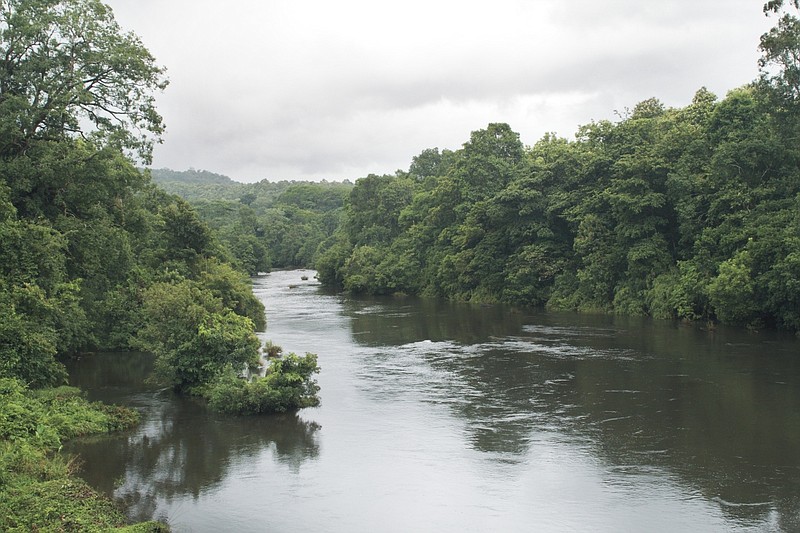Representatives from the city of Texarkana, Texas, the Sulphur River Basin Authority and the Riverbend Water Resources District met Tuesday in Texarkana to discuss regional water issues, the first time all three have sat at the same table.
SRBA Chairman Chris Spencer led the discussion, stating that his organization, which was created in 1985 by the Texas Legislature to conserve and develop the state's natural resources in the basin, was open to work cooperatively with the other two agencies.
"I think in the five months this new board has served, we have demonstrated a spirit of cooperation and partnership and I expect that will continue," he said.
Texas House Bill 2180, passed during the last session of the Texas Legislature, included several mandates for SRBA, as directed by the Texas Sunset Commission. They included board training on the Texas Open Meetings Act, increased transparency with stakeholders and the media, developing a strategic plan and seeking outside funding.
The bill also allowed Texas Gov. Greg Abbott to sweep the SRBA board, reappoint several members and appoint new ones, including Spencer.
He said they had gone through the changes and recommendations and were ready to work with the other entities.
"One of the important components of the Sunset Review was full transparency as well as stakeholder involvement throughout the basin," he said. "It is my hope as chairman that this is only one of but many meetings of stakeholders throughout the basin. I look forward to the discussions and dialogue that will be initiated today and the relationships that will be developed that will benefit not only the city of Texarkana and Riverbend, but all of the stakeholders throughout the basin."
SRBA Board Members Bret McCoy and Kelly Mitchell spoke on how they had met with the U.S. Army Corps of Engineers, which is conducting a study to determine if Wright Patman Lake can be raised, and if so, how high. The study, called the Tentatively Selected Plan, has been delayed more than two years by lack of funding and other issues. They said that it is due in September or October of this year.
Steve Mayo, water liaison for the city of Texarkana, Texas, explained that at one time the city owed the corps $28 million in water storage fees for the lake and that now that number is in the $6 million range. The amount doesn't include a required cultural resources study that could cost between $5 to $18 million he said.
"Most of the Indian ruins are underwater," he said, adding that they have also been talking with the Caddo Indians in Oklahoma about what they would like to do with the remains. "We are now talking to (corps) headquarters and working with our congressional representatives to get that going. The city of Texarkana has put aside money these past years and we're ready to do it. We're just waiting on their answer."
Mayo said that as far as updates, they weren't much further along than they were in 2016.
"It's very frustrating," he said. "We're just going to stay on top of it and that's all we can do."
Liz Fazio Hale, Riverbend's executive director and CEO, said they have been busy as the regional and local wholesale water provider for the area and that they had been working to gather data to make effective planning decisions.
She outlined several plans they are working on, including a water availability model for the lake. Hale said the last one was conducted in the 1990s and an update was needed.
"Riverbend has taken the lead in updating that model because we think it's important for the basin overall to know what events have impacted our availability as well as possible droughts of record," she said. The engineer conducting the study is the same one who did the 1990s study and he is running new models on the naturalization of flows in the basin
"By the time that project is done, we expect to know whether or not there has been another drought of record for planning purposes in the basin, as well as how much water would be available under the ultimate rule curve or under certain levels with reallocation," she said. "So, it's a very informative and important planning tool as well as an opportunity to provide water for our future and the future of the state of Texas."
The lake is operated under an interim rule curve of 220 feet. The contractual obligation between the corps and the city of Texarkana, Texas, is 228.64 feet, or the ultimate rule curve. If the lake were raised to this level, an additional estimated 80,000 to 100,000 gallons of water would be available for permitting.
Hale said they are also working with SRBA on a volumetric and sedimentation study in the lake, along with developing a Regional Water Master Plan to determine the infrastructure and amount of water needed for future growth.
In further discussion, Mayo said the city wants to participate in the studies SRBA and the corps conduct on the lake, as they are also a stakeholder.
State Rep. Gary VanDeaver said it was refreshing to see the group come together for a meeting.
"A few years ago I woulnd't have thought this would have been possible," he said, adding that he was looking forward to working with the boards and helping SRBA get additional funding.
"One of the biggest issues that my district faces is what we do with water in the Sulphur River Basin and it really is what will position us for the future," he said.

